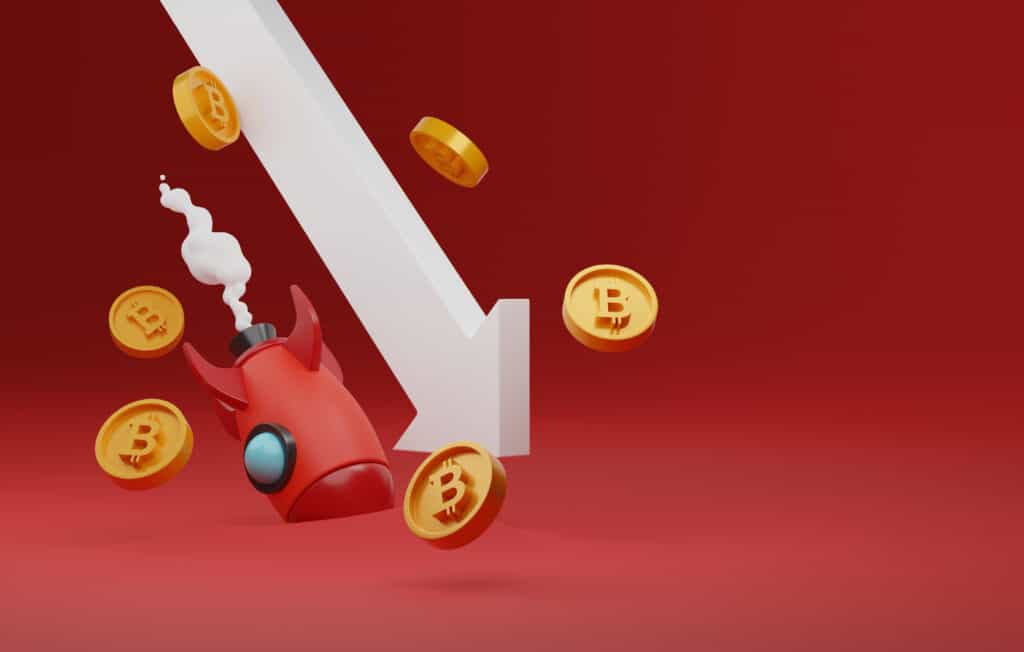Quick Answer:
Cryptocurrency trading is a popular way to earn money with digital currencies, leveraging their volatile prices to buy low and sell high. Traders can use various strategies and tools like spot trading, limit orders, and more to make profits on exchanges such as Binance, Kraken, and Coinbase.
The spread in crypto trading is the difference between the lowest sell order (Ask) and the highest buy order (Bid) on an exchange. This spread is crucial as it reflects the current supply and demand, helping traders gauge the profitability of a trade.
To calculate the spread, subtract the highest bid price from the lowest ask price. The spread percentage is found by dividing the spread by the lowest ask price and then multiplying by 100. Monitoring the spread can prevent traders from making unprofitable trades and is considered a professional trading tip.
There are many ways in which you can profit from cryptocurrencies. For instance, you can buy and hold, stake, lend and trade digital currencies, but crypto trading is definitely the most popular method for earning money with crypto.
The crypto market is far more volatile than the stock or forex financial market, as the prices of digital currencies are rarely stable, and you can’t know for sure when a cryptocurrency’s price is going to start to rise or fall. Crypto traders tend to exploit the price movements and high volatility of digital currencies by buying at low prices and selling when the prices get higher or exchanging one crypto for another and making profits from the price difference.
There are numerous tactics that traders employ, and one of them includes taking into account the crypto spread to increase your chances of scoring a profit. In this article, we’ll take a detailed look at how crypto trading on crypto exchanges works in order to understand the concept behind spreads and their importance for traders.

Crypto Exchanges and Cryptocurrency Trading
When Bitcoin (BTC) was launched back in 2009, it was quite difficult to engage in crypto trading because you had to find someone who was interested in buying BTC from you or selling you some coins. The whole trade arrangement was a big hassle since you never knew whether the person you found on an internet forum or social media group was going to trick you.
That’s why cryptocurrency exchange platforms were invented in 2010 as a medium for crypto trading, making the whole process far more secure, practical and available for total beginners and experienced brokers alike.
The first crypto exchanges were called Bitcoin exchanges because they only dealt with BTC, but as the cryptocurrency market got bigger and developer teams started launching altcoins, trading platforms began including new cryptocurrencies in their portfolio of supported crypto assets.
By the mid-2010s, crypto exchanges were offering various digital currencies for purchase and exchange. Today, some of the most popular crypto exchanges such as Binance, Kraken, Gemini, Coinbase and Bitstamp have millions of verified users and multi-billion USD market caps on a regular basis.
Platforms offer tens or even hundreds of crypto coins and tokens for purchase, which means that traders have huge possibilities for buying, selling and exchanging cryptos for profits. The whole market is worth more than 2 trillion USD, and most of that cash comes from crypto trading.
Traders have various trading tools and order types at their disposal, such as spot trading, limit orders, stop-loss orders, margin trading, leverage trading, futures trading and other tools for exchanging assets.
Whichever trading strategy you use, taking into account the crypto market spread is an essential part of trading that will help you understand the market of your selected crypto or trading pair. You should also choose a platform that offers you to try a demo account to practice your skills before you start trading with real cash.

Crypto Market Spreads
While trading cryptos, users can place buy or sell orders for cryptocurrencies at the price of their choice. Of course, the price needs to be realistic if traders want to end up with a match. For example, if the average price of Bitcoin is 50,000 USD per coin, it’s unrealistic to place a 40,000 USD buy order because no one would want to sell you their BTC for such a low price.
The difference between the lowest price at which traders agree to sell a cryptocurrency and the highest price at which traders are willing to buy Bitcoin or any other digital currency is called a spread.
The market spread is a constantly fluctuating variable that depends on the particular cryptocurrency, the chosen platform and the specific trading deal between two brokers. The price that the traders ask for to sell their coins is referred to as the Ask, while the amount of cash someone is willing to pay for a cryptocurrency is referred to as the Bid. The difference between these two values is the market spread for that crypto.
All of your orders are stored in the exchange’s order book that contains all of your trading histories and allows you to see the market price at which you’ve entered a position, made a purchase, sale or exchange. Just like an individual trader has their own order book, so, too, does every crypto and trading pair on the platform.
They serve to provide users with an overview of the order history of that crypto or trading pair, and you can easily see the ask and bid prices, which gives you an idea about the realistic demand for when you strike trading deals yourself.

Importance of The Crypto Market Spread
Beginner traders might wonder why the market spread of a cryptocurrency is so important. Well, the thing is that based on the market spread, you can have a realistic idea about the supply and demand for certain crypto on the market. Bid prices can show you how much a certain asset is demanded by traders on the market, while ask prices are a good indicator of a currency’s market supply.
Market spreads can help you calculate the profitability of a trading deal and help you avoid a bad trade that can’t generate you any profits at the moment.
Let’s imagine that the lowest ask price of Ethereum (ETH) is 4,000 USD per coin on your chosen exchange platform. At the same time, the highest bid price is 3,500 USD per ETH coin. The spread is 500 US dollars.
This means that it’s totally unprofitable to buy ETH at the moment because you won’t be able to sell it for more than 3,500 USD per coin on that exchange platform. In this case, monitoring the market spread would save you potential losses. The market may crash, and the highest ETH bid price may go down even further, and you’d just suffer extra losses.
In order to profit, the highest bid price needs to be significantly higher than the highest ask price. It’s quite useful to pay close attention to the market spread and save yourself some unnecessary losses during crypto trading.
How to Calculate the Crypto Spread
Crypto exchange platforms don’t usually show you the exact market spread for a given cryptocurrency or a trading pair, but they do offer you the necessary resources for your own market spread calculations. You can go to the order book of a certain asset on your crypto exchange and view all the trades for that asset during a set amount of time (e.g. the last 24 hours, 7 days or 30 days). This information can be used to calculate the current market spread for that particular cryptocurrency.
You need to find the highest bid price and the lowest ask price. Once you find these two values, all you need to do is deduct the bid price from the ask price, and you’ll arrive at the market spread.
Additionally, you can also calculate the spread in the form of a percentage. To do this, you need to divide the spread by the lowest ask price and multiply it by 100. The result you get gives you the spread percentage.
For example, if the highest bid price for Litecoin (LTC) is 200 USD and the lowest ask price is 250 USD, the spread is 50 USD. Then the percentage is calculated as follows: 50/250×100 = 20%.

A Few Ending Words…
When you start trading cryptocurrency, the exchange platform won’t tell you to monitor the market spread and calculate it when deciding on a trade. Monitoring the market spread is a pro trader tip that helps you differentiate currently profitable trading deals from unprofitable ones.
The bid-ask spread calculating mechanism is quite simple, and you shouldn’t be lazy to do it before you open a position. Do the math because you can save yourself from losing money on senseless trades that seem like a good idea but are actually not going to turn any profits.

